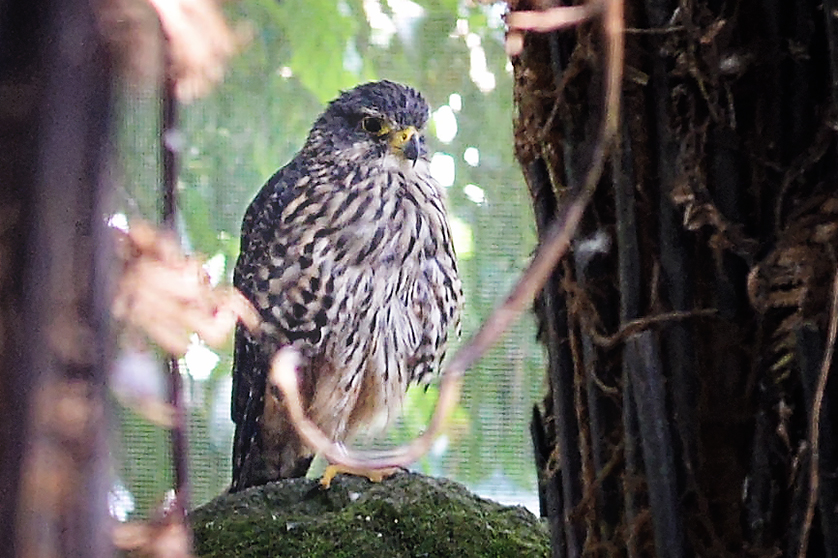New Zealand Falcon (Kārearea)
 |
| New Zealand Falcon, or Kārearea |
Hunter
With New Zealand's iconic bird, the kiwi, being flightless, you might be forgiven for thinking that most native New Zealand birds are flightless.
The New Zealand falcon (kārearea, in Maori) not only flies, but does so with great skill. This bird of prey has a wingspan at least the length of a human arm, and uses its wings to achieve speeds of up to 200 km/h when hunting other birds in flight. Seizing its prey with its talons, it quickly kills it with a bite to the neck.
The New Zealand falcon is very territorial and fearless, attacking much larger organisms than itself--even if not always successfully. Typical prey are varied, including insects such as beetles, lizards, and small mammals such as rats and mice.
 |
| New Zealand Falcon |
Larger Female
There is a notable difference in size between the male and female New Zealand falcon, with the female weighing one-third as much again as the diminutive male. Females can hunt even young rabbits. Once a pair has completed their mating game, they remain a pair for life.
Three Types
There are three types of New Zealand falcon: the "Bush" falcon (smaller and darker), which lives in forests, mainly in the North Island and the northwestern South Island; the "Eastern" falcon (larger and paler), in the central South Island, and the "Southern" falcon (mid-sized) in the far south of the country.
Endangered
The New Zealand falcon is even more endangered than the kiwi, with an estimated population of only about 3,000 to 5,000 breeding couples. They have been protected by law since 1970, and are bred in captivity in such refuges as the Wingspan National Bird of Prey Centre, in Rotorua.
A major killer of New Zealand falcons is New Zealand's electricity grid. Many birds are electrocuted on electricity transformers.
Nesting Habits and Chicks
One problem with New Zealand falcon conservation is that the bird nests on the ground, making the eggs and chicks vulnerable to cats, stoats, and other introduced predators. New Zealand falcons are not as good at keeping predators off their nests as they are at killing prey in mid-flight. However, chicks that survive continue to be fed by their parents until they are several months old.
Not the Australasian harrier
The New Zealand falcon can be easily confused with another common bird of prey, the Australasian harrier. However, the Australasian harrier is considerably bigger, and is silent when it flies. Whereas the New Zealand falcon makes a distinctive "keck-keck!" call as it flies.





0 Comments